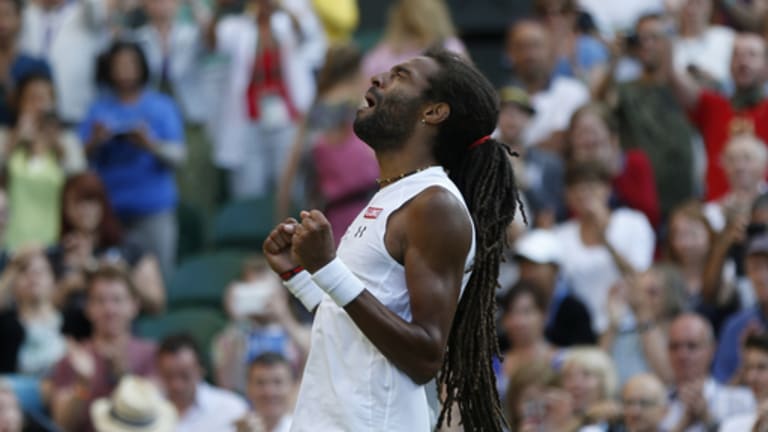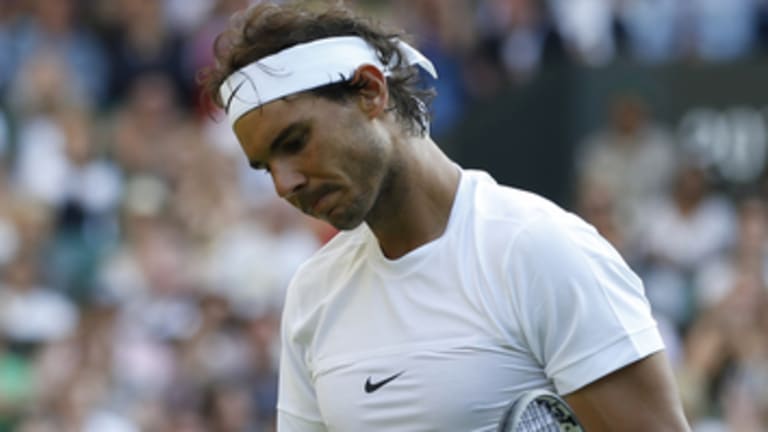Can a match be at once shocking and predictable? Dustin Brown’s 7-5, 3-6, 6-4, 6-4 second-round win over Rafael Nadal was a little bit of both.
We knew that the man known as Dreddy Tennis had won their only previous meeting, on grass, a year ago. And we could see, right from his first no-look drop-volley winner, that he was going to be a dangerous opponent for Nadal today. Yet a Brown win on Centre Court, over the course of three-out-of-five sets, still felt like a long shot. At some point Dreddy would have to come down to earth, Rafa would have to rise from the ashes, and we would all remember why one of them has been ranked No. 1, and the other is ranked No. 102.
But when it was over and No. 102 had won, it no longer felt so surprising. In hindsight, the fact that Brown is so low on the totem pole should have been a sign. He’s the fourth straight player ranked No. 100 or lower, after Lukas Rosol, Steve Darcis, and Nick Kyrgios, to beat Nadal at Wimbledon. More than that, Brown is 6’5”, has a bullet serve, a two-handed backhand, an ability to attack, a penchant for playing quickly, and, on this day, absolutely nothing to lose. That’s a recipe for a Rafa-killer.
“I lost,” a downcast Nadal said afterward. “Sad, today, for that, obviously...Good moments, bad moments. Obviously today is a bad moment for me.”
Some said that it was the most disappointed they’d ever seen Rafa. I didn’t think that as I watched him. His reaction reminded me of his reactions to his last three losses at Wimbledon: Immediate disappointment in losing to a much-lower-ranked player was mixed with a growing resignation that his best years at this, the tournament he most wanted to win when he was young, are behind him. Today he sounded that note of resignation directly.

